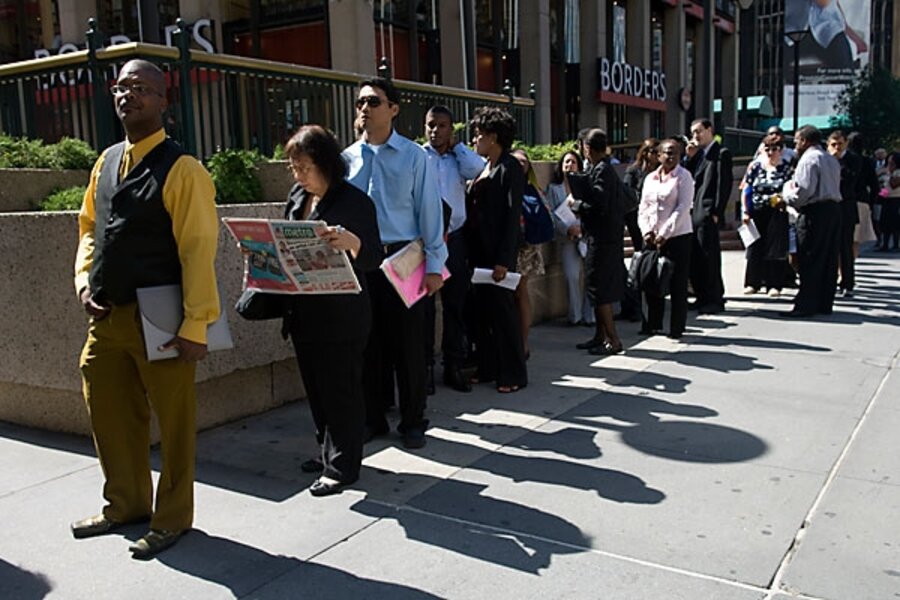Recession takes a toll as US poverty surges
America's poverty rate surged upward last year, underscoring the toll of recession on ordinary households across the nation.
Some 13.2 percent of Americans were living below the poverty line in 2008, the Census Bureau said Thursday. That's a significant jump from the 12.5 percent poverty rate a year earlier. The rise means that nearly 40 million Americans are living in poverty, defined by incomes of less than $10,991 for an individual or $22,025 for a family of four.
The Census conducts its annual survey on incomes and poverty in the spring of each year, so the 2008 survey captures only the recession's early phase – leaving out the deeper impact as unemployment skyrocketed late last year. This suggests the poverty rate will be even higher in next year's report, but the agency also notes some progress when the data are viewed in a longer-term context.
"The poverty rate in 2008 (13.2 percent) was ... 9.2 percentage points lower than in 1959, the first year for which poverty estimates are available," the authors write.
The report comes as the weak economy, coupled with debate over healthcare policy, has focused attention on the question of government's role in the economy. Many policy analysts say, for example, that the introduction of the Medicare program for seniors is a key reason for the long-term decline in poverty rates for seniors.
For all age groups, although poverty rates are lower than in 1959, little progress is visible in the data since the mid-1970s. Poverty goes up in recessions and declines during better times.
In his televised speech to Congress Wednesday, President Obama sought to strike a balance on policy. He pitched his healthcare reform plans on the notion that America's character includes individual choice and limits on the size of government (and federal deficits). But he added that "our predecessors understood that ... the danger of too much government is matched by the perils of too little."
Some policy analysts say the new Census data bolster the case that government programs can help the nation meet social-welfare goals amid economic swings. For example, poverty among children rose significantly last year, yet the percentage of children with health insurance actually rose because of growing participation in government-backed healthcare.
“This is entirely due to the overwhelming success of the Children’s Health Insurance Program and Medicaid," said Bruce Lesley, president of the children's advocacy group First Focus, in a statement analyzing the Census numbers.
Beyond the poverty numbers, some other highlights of the Census report include:
• Per capita income, adjusted for inflation, fell 3.1 percent in the year. Still, the typical household had inflation-adjusted household income of $50,303, up from about $40,000 in 1967.
• The distribution of income became more unequal, although all income groups have been hit by the recession. The top 20 percent of households earn 50 percent of US personal income, versus 3.4 percent for the bottom 20 percent.
• The percentage of Americans without health insurance stayed relatively flat at 15.4 percent. But the share with employer-sponsored coverage fell, while the share covered by government programs rose.
—–
Healthcare’s spending spiral
Obama’s pursuit of a healthcare overhaul has put a sharper focus on a central and perplexing issue: how to control fast-rising costs. Here’s a Q-and-A on the choices ahead.
—–
Follow us on Twitter.





